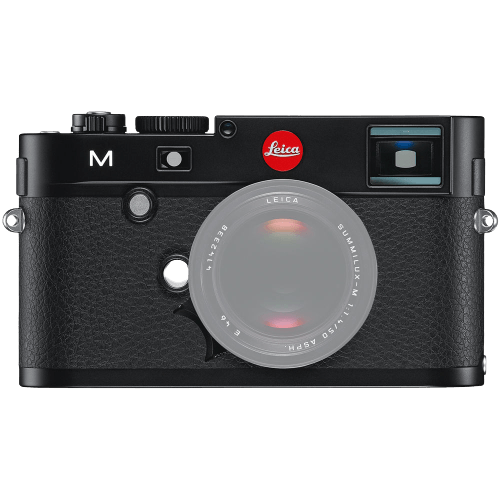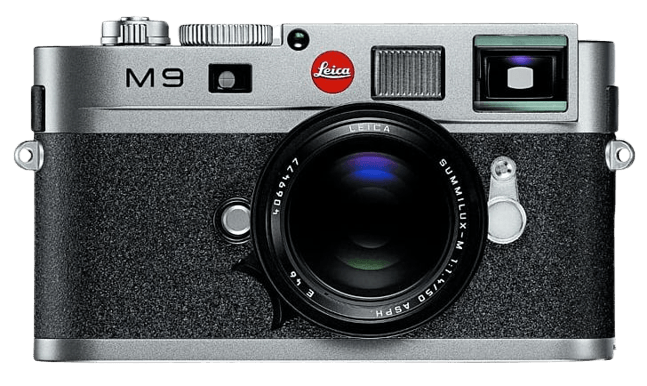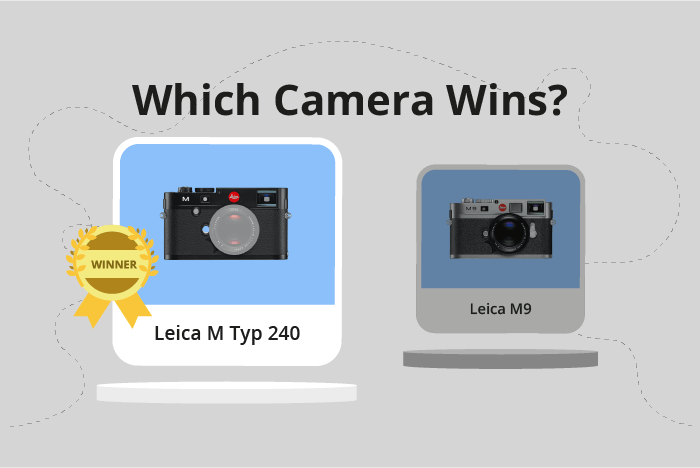Leica M Typ 240 vs M9 Comparison
Leica M Typ 240

Leica M9

The Leica M Typ 240 takes the lead with a score of 57/100, outperforming the Leica M9, which scores 34/100. Both cameras are mirrorless and share similar dimensions, with the M Typ 240 measuring 139 x 80 x 42mm and the M9 at 139 x 80 x 37mm.
The M Typ 240 excels with its higher score, justifying the higher launch price of $6950 compared to the M9’s $5500. Released in 2012, the M Typ 240 is also a more recent model than the M9, which was launched in 2009. However, the M9 is slightly lighter, weighing 585g compared to the M Typ 240’s 680g.
Taking these specifications into account, the Leica M Typ 240 is the clear winner in terms of performance and features, while the Leica M9 offers a more budget-friendly and lightweight option.
Leica M Typ 240 vs M9 Overview and Optics
The Leica M Typ 240 outperforms the Leica M9 in optics, scoring 62/100 compared to the M9’s 42/100. Both cameras share some common specifications, such as having a full-frame sensor, Leica M lens mount, and no image stabilization. However, the M Typ 240 excels in certain areas, making it the superior option.
The Leica M Typ 240 has a higher megapixel count of 24, compared to the M9’s 18 megapixels. This allows for greater image resolution and detail. Additionally, the M Typ 240 has a faster shooting speed of 3 frames per second, whereas the M9 only manages 2 frames per second. This makes the M Typ 240 more suitable for capturing fast-moving subjects or action shots.
Furthermore, the M Typ 240 features a CMOS sensor and a Maestro processor, resulting in a higher DXOMARK score of 84. In contrast, the M9 has a CCD sensor and a Maestro II processor, with a lower DXOMARK score of 69. The M Typ 240’s superior sensor and processor contribute to better image quality and performance.
The Leica M9, on the other hand, does not offer any significant advantages over the M Typ 240 in terms of optics. Its lower score reflects its inferior specifications and performance in comparison to the M Typ 240.
Considering these points, the Leica M Typ 240 stands as the better choice for those seeking superior optics and performance. Its higher megapixel count, faster shooting speed, and better sensor and processor all contribute to its higher score and overall better performance compared to the Leica M9.
Leica M Typ 240 vs M9 Video Performance
When comparing the video capabilities of the Leica M Typ 240 and the Leica M9, it is important to note that the Leica M9 does not have any video functionality. Therefore, this comparison will focus on the video features of the Leica M Typ 240.
The Leica M Typ 240 has a video score of 43 out of 100. It offers Full HD video recording with a maximum resolution of 1920 x 1080 pixels. The camera can record videos at a maximum frame rate of 30 frames per second, providing smooth and clear footage. However, the Leica M Typ 240 does not have built-in time-lapse functionality.
Taking into account the video capabilities of the Leica M Typ 240, it is evident that this camera has some video features, while the Leica M9 lacks video functionality completely. This difference should be considered when choosing between these two cameras, depending on the user’s needs and preferences.
Leica M Typ 240 vs M9 Features and Benefits
The Leica M Typ 240 takes the lead in the features comparison with a score of 54/100, while the Leica M9 lags behind with a score of 17/100. This 43-point difference highlights the superiority of the M Typ 240 in terms of features.
Both cameras share some specifications: neither has a touchscreen, flip screen, GPS, WiFi, or Bluetooth. However, the M Typ 240 outperforms the M9 in screen size and resolution. The M Typ 240 boasts a 3-inch screen, while the M9 has a smaller 2.5-inch screen. Furthermore, the M Typ 240’s screen resolution is significantly higher at 920,000 dots, compared to the M9’s 230,000 dots. This means the M Typ 240 offers a larger, clearer display for better image review and composition.
On the other hand, the Leica M9 does not have any features that make it better than the M Typ 240. The M9’s lower score reflects its limited capabilities compared to its counterpart.
Taking all factors into account, the Leica M Typ 240 is the clear winner in terms of features. Its larger screen and higher resolution provide photographers with a better user experience and more accurate image review. The Leica M9, while still a capable camera, falls short in this comparison due to its smaller screen and lower resolution. Therefore, the Leica M Typ 240 is the better choice for those seeking a camera with superior features.
Leica M Typ 240 vs M9 Storage and Battery
The Leica M Typ 240 outperforms the Leica M9 in storage and battery, scoring 27 points compared to the M9’s 21 points. Both cameras share some similarities in this regard, such as having a single memory card slot and lacking USB charging capabilities. They also both accept SD and SDHC memory cards, but the M Typ 240 goes a step further by supporting SDXC cards as well.
The M Typ 240’s higher score is primarily due to its superior battery life, offering 500 shots per charge compared to the M9’s 350 shots. Additionally, the M Typ 240 uses the more advanced BP-SCL2 battery type, which contributes to its longer battery life. The M9, on the other hand, relies on the older BP-SCL1 battery type.
Although the M9 falls short in this comparison, it still provides adequate storage and battery life for many photographers. However, for those who prioritize longer shooting sessions and greater storage capacity, the M Typ 240 is the clear winner.
Leica M Typ 240 vs M9 – Our Verdict
Are you still undecided about which camera is right for you? Have a look at these popular comparisons that feature the Leica M Typ 240 or the Leica M9:

